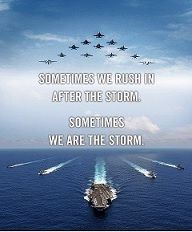China may launch Type 001A carrier on Mao's birthday: report
China is ready to launch its first domestically built aircraft carrier, known as the Type 001A, on Dec. 26 to mark the 122th birthday of Mao Zedong, according to Hong Kong newspaper Ming Pao on Sept. 24.
President Xi Jinping reportedly visited the Dalian Shipyard to inspect the progress of work on the carrier in August. The shipyard had previously overseen the retrofitting of the Varyag, China's first aircraft carrier purchased as a hulk from Ukraine and finally commissioned in 2012 as the Liaoning.
Noting that it took only two years and eight months for the US to complete the USS John C Stennis, its seventh Nimitz-class aircraft carrier, Ming Pao predicted that China will be able to complete the construction of the Type 001A in a similar time. The John C Stennis was commissioned in 1995.
Moreover, unlike the John C Stennis, the Type 001A is only a conventionally powered carrier rather than a nuclear-powered carrier and is much smaller than the supercarriers of the US Navy.
Ming Pao also pointed out that China has a tradition of launching new warships at the end of a year to celebrate Chairman Mao's birthday. In 1970, it was the day that China launched its first nuclear-powered submarine, the Changzhen-I. Three out of China's four Han-class Type 091 submarines were also launched on Dec. 26.
July 1 and Aug. 1, the anniversaries of the founding of the Communist Party of China and the People's Liberation Army respectively are likewise two dates that warships or other types of military hardware are commissioned, the paper said.
However, while the new carrier may be launched on Dec. 26, it will probably take another two to three years for the Type 001A carrier to enter service, Mign Pao said, suggesting Oct. 1, 2019 — the 70th anniversary of the founding of the People's Republic of China — as a possible date. Link




___________
It'll be interesting to see if this actually comes to pass according to their comparison with the John C Stennis.
Speaking of, looks like they couldn't resist photochopping a Nimitz-class into their promotional materials (again)
China is ready to launch its first domestically built aircraft carrier, known as the Type 001A, on Dec. 26 to mark the 122th birthday of Mao Zedong, according to Hong Kong newspaper Ming Pao on Sept. 24.
President Xi Jinping reportedly visited the Dalian Shipyard to inspect the progress of work on the carrier in August. The shipyard had previously overseen the retrofitting of the Varyag, China's first aircraft carrier purchased as a hulk from Ukraine and finally commissioned in 2012 as the Liaoning.
Noting that it took only two years and eight months for the US to complete the USS John C Stennis, its seventh Nimitz-class aircraft carrier, Ming Pao predicted that China will be able to complete the construction of the Type 001A in a similar time. The John C Stennis was commissioned in 1995.
Moreover, unlike the John C Stennis, the Type 001A is only a conventionally powered carrier rather than a nuclear-powered carrier and is much smaller than the supercarriers of the US Navy.
Ming Pao also pointed out that China has a tradition of launching new warships at the end of a year to celebrate Chairman Mao's birthday. In 1970, it was the day that China launched its first nuclear-powered submarine, the Changzhen-I. Three out of China's four Han-class Type 091 submarines were also launched on Dec. 26.
July 1 and Aug. 1, the anniversaries of the founding of the Communist Party of China and the People's Liberation Army respectively are likewise two dates that warships or other types of military hardware are commissioned, the paper said.
However, while the new carrier may be launched on Dec. 26, it will probably take another two to three years for the Type 001A carrier to enter service, Mign Pao said, suggesting Oct. 1, 2019 — the 70th anniversary of the founding of the People's Republic of China — as a possible date. Link
___________
It'll be interesting to see if this actually comes to pass according to their comparison with the John C Stennis.
Speaking of, looks like they couldn't resist photochopping a Nimitz-class into their promotional materials (again)


Comment